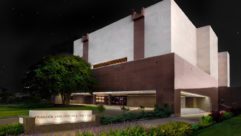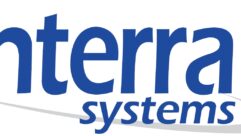
Technology Showcase: Assistive-listening Systems
Dec 1, 2007 12:00 PM,
By Bennett Liles
Flexible options for improved listening experience.

Telex SoundMate
As sound systems have grown increasingly sophisticated in their capabilities and control options, installers and operators have also reached a new level of understanding of the importance of room acoustics and the methods of electronic distribution. But to a fast-growing segment of our population, the best acoustic treatments and sound-system features don’t get the message to its final destination adequately. Those with congenital hearing defects or acquired hearing loss due to advancing age represent a population segment no longer on the fringe of society, and their special needs have been recognized in the Americans with Disabilities Act and other federal legislation. They are also reflected in the expanding market of assistive-listening devices and systems now available. New companies specializing in this commercial realm have appeared, and well-established names in the sound hardware business have added assistive-listening systems to their product lines.
The devices, commonly referred to as ALDs, and the systems, known as ALSs, take many forms, and there are several effective principles used to provide additional sound power directly into the ears of those requiring that help. The systems vary both in the specific radiation method used to convey the signals from transmitter to receivers and in the way that the receiver output interfaces with the user.
While ALDs exist in many forms — including telephone-amplification devices, amplified answering machines, computer text-to-speech systems, and wake-up alarms — the types examined here involve adjunct hardware to sound systems intended to provide augmented listening for some members of assembled groups. They typically work on electromagnetic or infrared radiation, and they connect with users at the receiving end by either acoustic, inductive, or electronic means. Before we get to some of the specific products on the market, here’s a brief review of the types of assistive-listening systems normally used in various venues to help those with specialized hearing requirements.
SOUND-FIELD SYSTEMS
These are normally used as a temporary or permanent installation in small venues that are dedicated primarily to the use of those needing augmented sound support, such as classes for hearing-impaired students. These are, in essence, just specialized PA systems with multiple compact loudspeakers used to distribute sound so that each loudspeaker is near its intended small area of coverage. These can be ceiling loudspeakers or individual mini cabinets similar to computer loudspeakers placed very close to each participant. The system is usually dedicated to this purpose, and it can include a wireless microphone that transmits on a common frequency directly to receivers located inside the loudspeaker housing. Sound-field systems can also be used as an optional addition to an existing room sound system.
INDUCTION-LOOP SYSTEMS
As the name implies, this type of ALS uses the principle of electromagnetic induction to carry information to listeners. Induction-loop systems consist of three primary parts: the audio source, which is either a microphone or the output of a sound system; the loop amplifier; and the wire loop. The loop can be small enough to fit under a table or chair, or it can encircle the entire room. The listener’s normal hearing aid is switched to its T-coil function (also used with telephones), and it inductively links to the signal transmitted through the wire. The receiving coil inside the hearing aid is sensitive to the distance and orientation relative to the plane of the transmitter coil’s signal. The primary advances recently in such systems have been the three-dimensional induction loop and the self-contained portable induction-loop system.
FM SYSTEMS
These are basically wireless-microphone systems incorporating one source transmitter and a number of receivers. This, of course, requires each listener to have a receiver that is tuned to the common frequency of the others. Users will normally pick up their receivers as they enter the venue and either connect their hearing aids to the receiver or use a small headset. The advantage of the induction-loop system described earlier is that listeners normally need no hardware beyond their own hearing aids. The advantage of the FM system is that no loop need be installed, and the transmission is typically somewhat more robust and not limited by planar orientation or the line-of-sight required for infrared systems. Recent advances here include behind-the-ear (BTE) FM receivers built into hearing aids. In their portable form, the FM systems are somewhat more self-contained, using an antenna that is directly connected to the transmitting unit.
INFRARED SYSTEMS
Working on the same technology principle as the common TV remote control, infrared systems are limited to line-of-sight reception so the receiver must be worn out in the open to work. However, a significant advantage actually arises from this limitation. Being line-of-sight, the signal will not penetrate walls or go around corners, so there is no problem with using identical receivers in adjacent rooms, and if security is an issue — such as in corporate meetings or courtroom environments — no special encryption is needed for the IR system’s signals to remain secure within the room. Two-channel systems are available for simultaneous interpretation or stereo transmission. The emitter may be table-, wall-, or ceiling-mounted, and it contains a number of LED segments to transmit the signals as part of either a portable or permanent installation.
THE MARKET
For infrared operation in larger venues, the IRT-730 emitter panel from ADS Worldwide can be used with several of the company’s receivers, and its range and coverage can be extended with the IRT-730-R repeater panel. Used alone, the 3.2W IR transmitter can cover an elliptical area of about 125’×78′. The unit incorporates a 1/4in. mounting hole to enable it to be screwed to the top of a photographic tripod or mounted to a wall with the included bracket. The IRT-730 features a mic input, line input, and high-level input. It can be used with the IRR-NL neck-loop receiver, the IRR-ST stethoset receiver, or the IRR-LAN lanyard receiver.
The ILD1000G professional audio induction-loop driver from Ampetronic is a 19in. rack unit capable of driving the largest perimeter loops to cover more than 4000 square feet with high-voltage headroom using a high-efficiency Class-G amplifier with low-heat dissipation. The unit includes one XLR mic-level input, one XLR mic/line input, and one 6.3mm jack line input. The front panel includes meters for compression and current level along with lights for overload, overheat, loop error, and power. For even more coverage, multiple ILD1000Gs can be combined using Ampetronic ILC Parallel Drive technology. The unit is designed for loops with DC resistance from 0.5Ω to 3Ω and 3.5Ω impedance.
The ALB-40 system from Anchor Audio is an FM system designed for larger venues such as theaters, auditoriums, church sanctuaries, and large classrooms. The system includes one AL-TX base transmitter, four AL-WB belt-pack receivers, four AL-HP in-ear headphones, eight batteries, a rackmount kit, an RCA connecting cable, and an available carrying case. The system covers a transmission radius of about 300ft. on 16 user-selectable UHF channels. There are XLR, 1/4in., and RCA input connectors on the AL-TX transmitter unit, and the receivers operate up to 12 hours on AA batteries.
The EX-PS3-T6 diode master theater emitter from Audex has 165 80-degree high-power diodes producing an infrared coverage area suitable for courtrooms, meeting rooms, auditoriums, movie theaters, and outdoor venues. Mounted at a height of 15ft. to 30ft., the EX-PS3-T6 can cover an area of about 6000 square feet with 93-percent emitting efficiency — enough to be used in daylight. The unit can be operated in slave mode to take a signal from another EX-PS3-T6, or it can input the signal directly from the loudspeaker system of a theater or other venue. The REC-T3 neck-loop infrared receiver delivers the signal to the listener through a top-mounted volume control and a separate on/off switch.

Galaxy Audio Any Spot
The Galaxy Audio Any Spot wireless personal monitor features the AS1000T FM transmitter with the capability to send stereo music for a CD or stereo system and speech from a microphone simultaneously on up to 64 selectable frequencies. These signals can be mixed with separate volume controls. They are chosen with group and channel numbers and displayed on the front panel. There is also a headphone jack and a front-panel peak meter to avoid over-driving. With the included antenna, the AS1000T can cover a radius of about 300ft. The AS1000R receiver uses two quarter-wave antennas, and it offers two 1/8in. output jacks for earbuds or for output to recording equipment. Auto-mute circuitry prevents static if the transmitter’s signal is lost momentarily.
Gentner assistive-listening systems are based on the TX-37A transmitter, which can be set to 37 different frequencies for educational and simultaneous-translation applications in a coverage area of up to 70,000 square feet. A shielded steel chassis keeps out extraneous signals. Transmission levels are automatically controlled by multiband compression, automatic gain control, and peak limiting. The most thoughtful features are a handy audio-input level meter and adjustable RF level control. The unit is supplied with a flex antenna, 70ft. of RG-174 cable, and a remote antenna mount. The RX-1A receiver has an on/off/volume control, and it is tunable through all the assistive-listening frequencies. The power LED indicates on/off and battery condition.
LightSpeed Technologies offers the LES 370 FM system primarily for classroom use with rechargeable batteries and 2-channel operation in the 216MHz-to-217MHz band. Each 370R belt-pack receiver has a volume control and a pair of Koss TM602 headphones or Sony MDR-S ultralight headphones. The 370T belt-pack transmitter puts out 50mW, and it features a mic-level audio adjust and a run-time capacity of 20 hours. The system is available in a variety of two-frequency combinations.
The LT-800 stationary transmitter from Listen Technologies features a front panel with an LED channel display, mix- and input-level meters, channel-selector buttons for 57 channel choices, contour control, a test-tone button, a channel selector, and a headphone monitor-level knob. The rear panel offers an input-1 connector with 1/4in. or XLR and a mic/line/phantom power switch and a stereo RCA input 2 with a level switch, RCA mix output connectors, a 12V power connection, multiple transmitter power settings, and an antenna connector. The LR-500 portable programmable FM display receiver allows users to lock out unneeded channels. It is available as the LR-500-863 with 17-wideband-channel capability or the LR-500-072/216 with 57 wide- and narrow-band channels.
Nady Systems equips its ALD-800 assistive-listening system transmitter with eight factory-installed selectable channels within the 72MHz-to-75MHz band for very simple operation, inputs for line- and mic-level audio, manual-input gain control, automatic gain control, an extendable antenna, and an LED power and audio modulation indicator that gets brighter as the modulation level increases. The ALD-800 receiver can be preset to any of the eight frequencies, and it can provide up to 130dB SPL with volume control. Earbuds are included, and they also carry the antenna in the cable. The unit is powered from a 9V battery, and it includes a power LED on the front panel.
The primary product for large auditoriums from Oval Window Audio, the Satellite III, is an induction-loop system compatible with all telecoil-equipped hearing aids and cochlear implants. For monitoring system performance, an induction-loop receiver is included. For venues larger than 300ft. around, a number of Satellite III systems may operate together. The system includes a 500ft. spool of loop wire, the neck-worn induction-loop receiver, signage, an instruction book, and a three-year warranty. The receiver has an LED indicator for signal strength, a battery-condition LED indicator, volume control, and a power switch. A single 9V battery supplies up to 50 hours of operating time. The Satellite III is designed for large-area coverage at less than the cost of a typical FM system.
Phonic Ear offers the StarSound 600 infrared system, including the 600E master emitter transmitting on 2.3MHz and 2.8MHz simultaneously and capable of covering up to 4000 square feet with an audio-frequency response of 50Hz to 12kHz +/-3dB. Inputs include left and right mic and line, along with sync inputs. This transmits to a PE 600R body-worn receiver with a variety of listening accessories, the PE 602R headset with integral receiver, including its infrared element with an ambient-light filter or the PE 601R stereo headset. This and the PE 602R have two selectable receive frequencies and 360-degree reception, and they are powered by two AAA batteries. Other controls include power switch and left/right volume controls.

R.L. Drake ALT1000. Photo: All Rights Reserved – ©Werlegig Imaging Inc. 2005
The AudioAccent assistive-listening system from R.L. Drake consists of the ALT1000 FM transmitter and four or more MR306A pocket receivers with earbuds. To ensure clarity, the ALT1000 offers selectable frequencies in the 72MHz-to-75MHz band and an LCD frequency display on the front panel. Input limiting and audio compression are switch-selectable through two XLR and two RCA input connectors. The MR306A personal receiver may be operated in mono or stereo mode with earbuds or with the internal loudspeaker. Volume is controlled with a large thumbwheel, and the LED screen shows the button-operated frequency selection. Five programmable memories store frequencies for easy instant recall, and a frequency-lock feature prevents accidental channel switching.
Among the infrared offerings from Sennheiser, the SZI 1029 emitter forms the heart of a system that includes an IR modulator, such as the SI 1015, and receivers such as the RI 250 single-channel stethoset receiver, which features volume control, left/right balance control, and low-frequency response adjustment, or the HDI302 lightweight headset, which features a built-in power switch, volume control, and 18Hz-to-18kHz frequency response. The SZI 1029 takes the signal from a modulator and uses its 144 infrared transmitting diodes to broadcast it over an area up to 12,500 square feet in single-channel mode or 6250 square feet in 2-channel mode. The unit features automatic on/off switching on command from the modulator and RF output for cascading the signal to additional emitters.
For large-area professional applications, Sound Associates markets its single-channel infrared transmitters for use with its SA611, SA612, and SA613 transmitter panels and SA650H and SA652H receiver units. Intended for use in courtrooms, theaters, classrooms, or meeting halls, the transmitter has a balanced line or microphone input with phantom power, external preamp gain control, a front-panel LED modulation-level meter, and a front-panel infrared output for program monitoring. The SA652P is a 2-channel/stereo pendant receiver that can be optionally equipped with a neck induction loop. The unit automatically turns on when the 3.5mm jack has a plug inserted, and the LED power indicator illuminates. A rechargeable battery powers the receiver.
The SoundMate personal listening system from Telex is an FM entry featuring the ST-300 base transmitter, the PST-170 belt-pack transmitter, and the SR-400 and SR-50 receivers. The ST-300 can use any of 17 programmable frequencies, displaying them on the front-panel LCD along with an audio-level meter. The unit also has a 1/4in. headphone jack on the front panel with a level control for audio signal monitoring. Front controls also allow the user to select mic, line, and 70V inputs; attenuate the input level; and select a high or low RF transmit level. The rear panel includes both XLR and 1/4in. input connectors. The PST-170 transmitter has two audio input jacks and includes a lapel microphone. The SR-400 receiver has a backlit LCD display and a high-frequency contour filter and boost switch. The SR-400 is tunable, while the SR-50 operates on a fixed frequency.

Williams Sound PPA 375
With an operational radius of 1000ft., the PPA 375 personal listening system from Williams Sound is an FM system for large venues with the T35 transmitter and R35 receiver. The front panel features a central pushbutton-controlled LCD with three pre-configured application presets: hearing assist, music, and voice. Controllable parameters include bandwidth, frequency, audio input source, high pass, low pass, compressor slope, compressor gain, and output power. There is also a 10-segment LED meter for audio level and a 1/4in. headphone jack with level control. ThePPA R35 belt-clip receiver has a 3.5mm headphone jack, a volume on/off knob, and a green LED power indicator that changes to red when battery power is low. The operating life with AA alkaline batteries is approximately 100 hours.
For More Information
ADS Worldwide
www.ads-worldwide.net
Ampetronic
www.ampetronic.com
Anchor Audio
www.anchoraudio.com
Audex
www.audex.com
Galaxy Audio
www.galaxyaudio.com
Gentner
www.gentnerals.com
LightSpeed Technologies
www.lightspeed-tek.com
Listen Technologies
www.listentech.com
Nady Systems
www.nady.com
Oval Window Audio
www.ovalwindowaudio.com
Phonic Ear
www.phonicear.com
R.L. Drake
www.rldrake.com
Sennheiser
www.sennheiserusa.com
Sound Associates
www.soundassociates.com
Telex
www.telex.com
Williams Sound
www.williamssound.com









